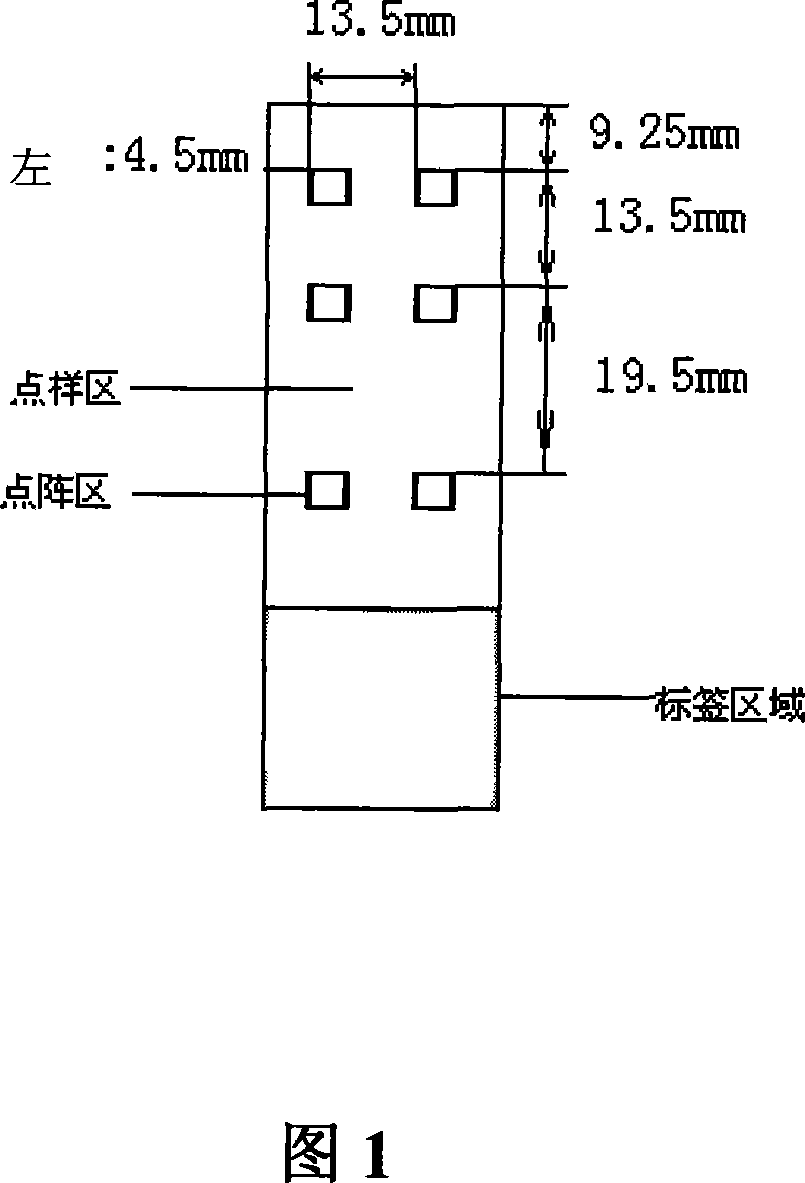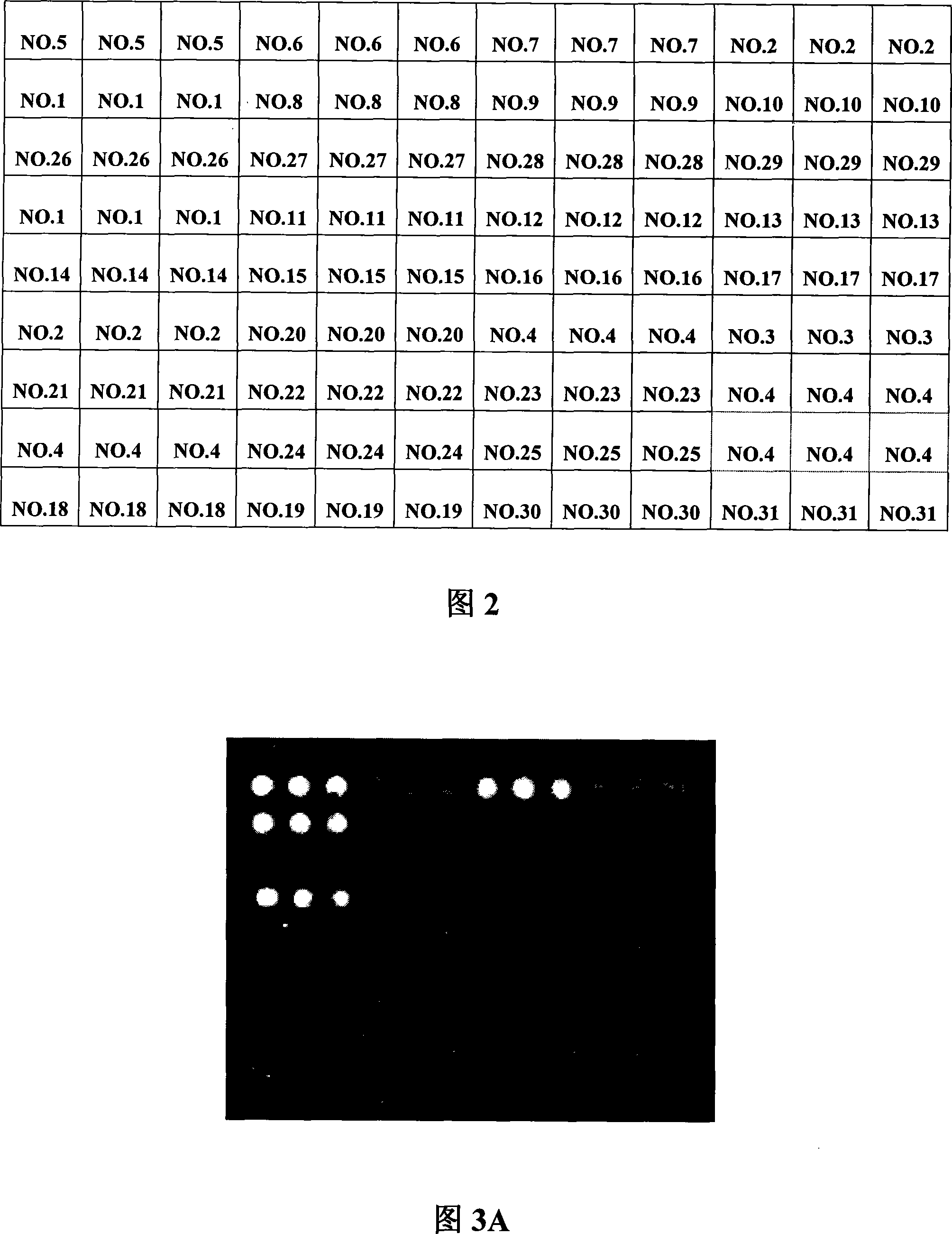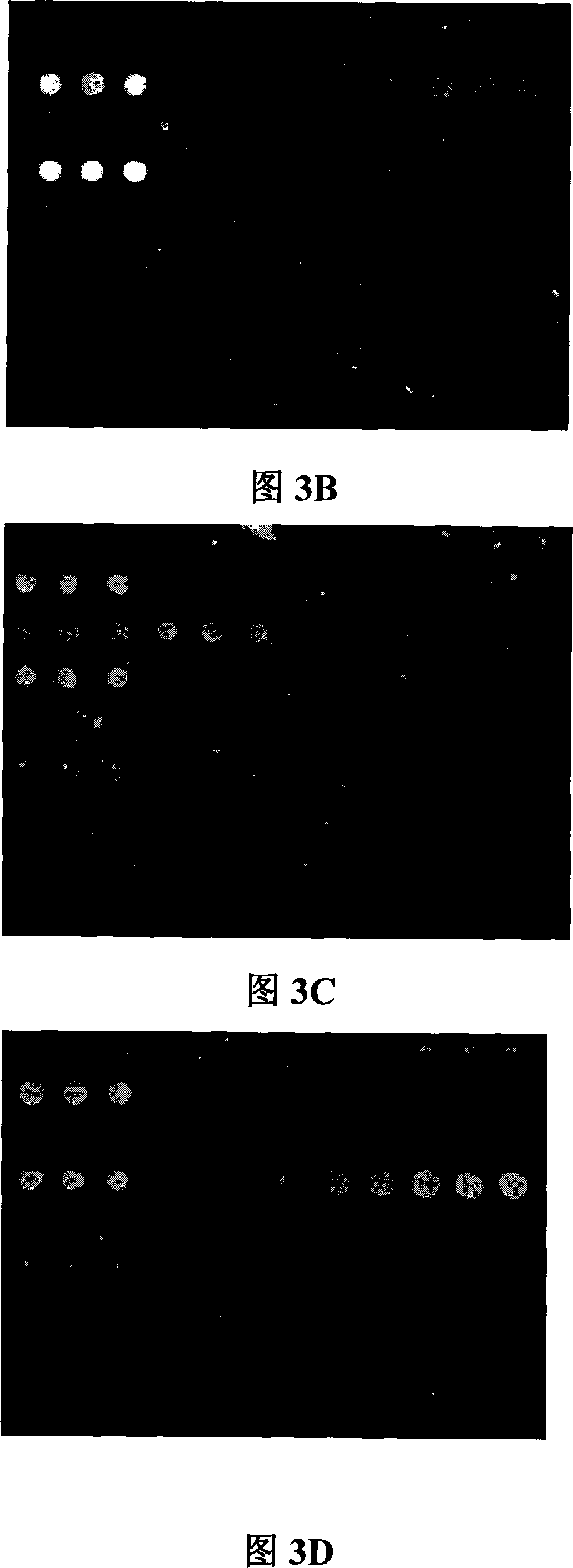Gene chip and kit for detecting common pathogen in dairy products
A gene chip and kit technology, which is applied in the field of gene chips and kits for detecting common pathogenic bacteria in dairy products, can solve problems such as difficult identification, and achieve the effects of simple operation, strong repeatability and high accuracy
- Summary
- Abstract
- Description
- Claims
- Application Information
AI Technical Summary
Problems solved by technology
Method used
Image
Examples
Embodiment 1
[0033] Example 1 Design and preparation of probe
[0034] 1. Sequence acquisition:
[0035] (1) Acquisition of bacterial 16s rDNA sequence: Download all 16s rDNA sequences of ten bacteria from the GenBank public database.
[0036] (2) Acquisition of 16S-23S rDNA interregion sequence: Download from the GenBank public database to obtain all 16S-23S rDNA interregion sequences of Salmonella, Staphylococcus aureus, Streptococcus pyogenes, Enterobacter sakazakii and their relatives .
[0037] The public database of Klebsiella pneumoniae's interregion sequence has only 21 interregion sequences of 9 strains, and the interregion sequence of Klebsiella oxytoca has only 1 sequence of one strain, which is not sufficient for screening specific probes. Need for needles. Our laboratory has tested 22 strains of Klebsiella pneumoniae, 3 strains of Klebsiella odorifera, 2 strains of Klebsiella rhinosclerosus, 4 strains of Klebsiella oxytoca, and 1 strain of Klebsiella terrestris. Bacteria and 1 str...
Embodiment 2
[0052] Example 2 Design and preparation of primers
[0053] 1. Sequence acquisition: same as the sequence of the designed probe.
[0054] 2. Design primers:
[0055] (1) Design of primers for the sequence of the amplified interregion: 16S rDNA of 10 bacteria downloaded from the public database NCBI is aligned with the sequence alignment software Glustal X, and a 16s rDNA conservative sequence near the interregion is selected as the upstream primer , The length conforms to the Tm value of 50℃±5℃, the length of 17bp±2bp, Hairpin: NONE, Dimer: NONE, False Priming: NONE, CrossDimer: NONE, and includes the bacterial universal probe sequence.
[0056] (2) Design of primers for amplifying ipaH gene sequence: align the ipaH gene sequences of the four Shigella species downloaded from the GenBank public database with the sequence alignment software Glustal X to find the conservative segment of the gene, Import the conservative segment into the primer design software PrimerPremier 5.0, and...
Embodiment 3
[0065]Example 3 Gene chip preparation-chip spotting
[0066] 1. Dissolving the probes: the probes synthesized in Example 1 were respectively dissolved in 50% DMSO solution, and diluted to make the final concentration of the probe reach 1 μg / μl.
[0067] 2. Add plate: add the dissolved probe to the corresponding position of the 384-well plate, 10μl per well.
[0068] 3. Spotting: Place a clean aldehyde-based glass slide (CEL Associates, Inc.) of 57.5mm×25.5mm×1mm (length×width×height) as shown in Figure 1 on the chip spotter (Spotarray 72). ), use SpotArray's control software (Tele chem smp3 stealty pin), run the program, and place dots on the aldehyde-based glass slide in a 4.5mm×4.5mm spot area according to the arrangement shown in Figure 2. , Forming a medium and low density DNA micro-matrix, the six dot matrix areas on the glass slide are arranged in the same pattern. The size of the dot matrix area is 3mm×2.25mm, the dot pitch in the dot matrix is 250μm, the matrix: 12×9, 1...
PUM
 Login to View More
Login to View More Abstract
Description
Claims
Application Information
 Login to View More
Login to View More - R&D
- Intellectual Property
- Life Sciences
- Materials
- Tech Scout
- Unparalleled Data Quality
- Higher Quality Content
- 60% Fewer Hallucinations
Browse by: Latest US Patents, China's latest patents, Technical Efficacy Thesaurus, Application Domain, Technology Topic, Popular Technical Reports.
© 2025 PatSnap. All rights reserved.Legal|Privacy policy|Modern Slavery Act Transparency Statement|Sitemap|About US| Contact US: help@patsnap.com



